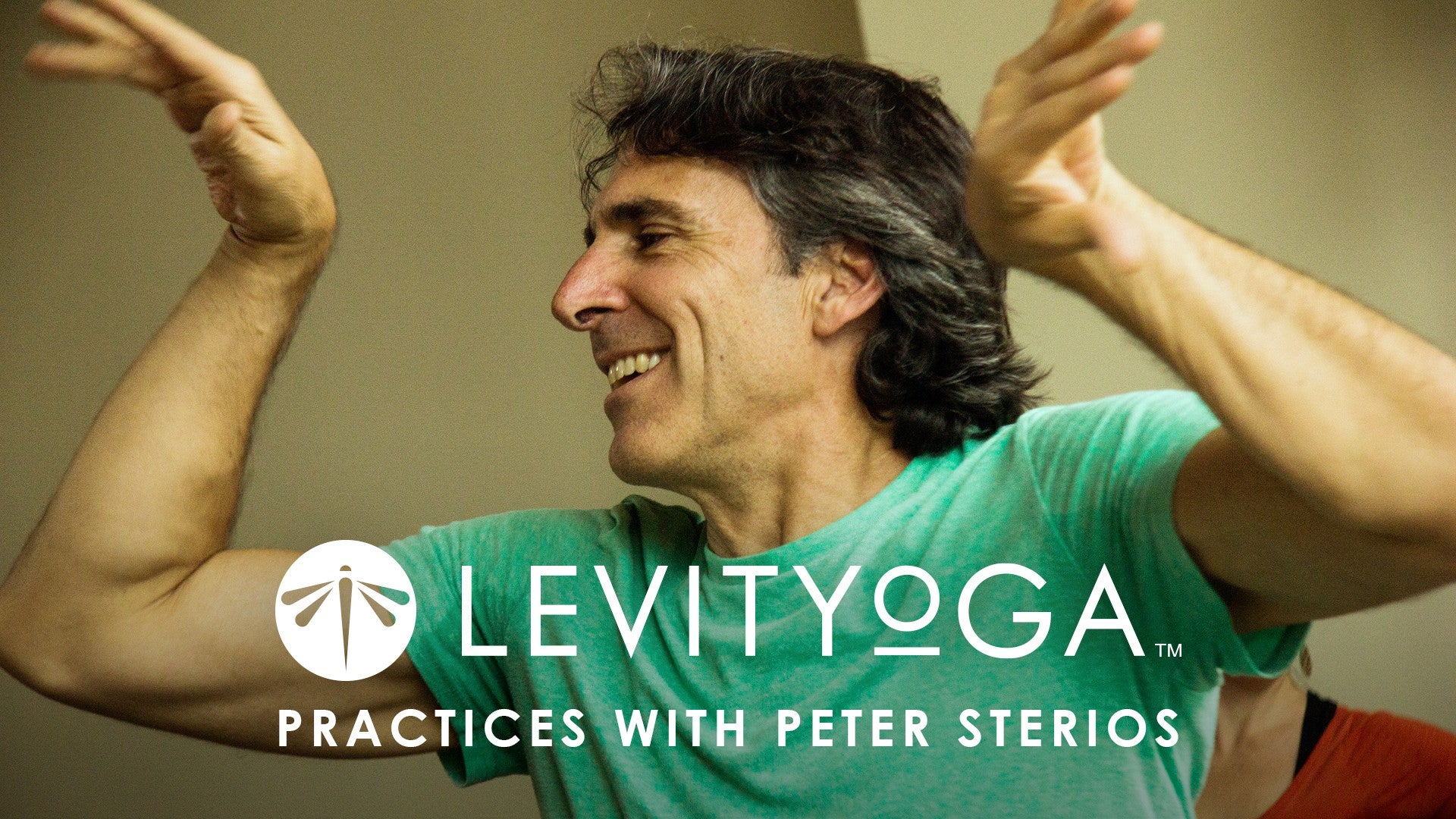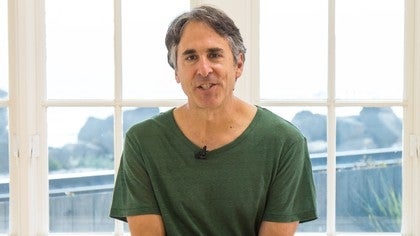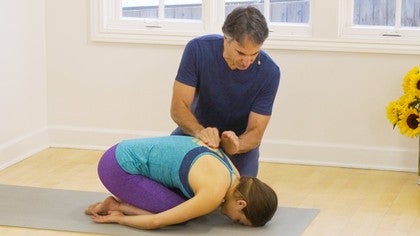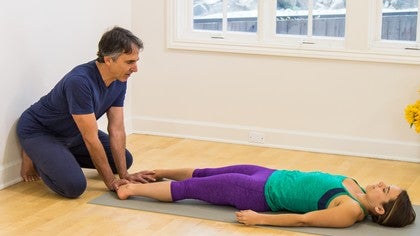Description
About This Video
Transcript
Read Full Transcript
Welcome to this insider conversation about pranayama and I can share from a personal experience as I was getting more skilled at asana through the practice of yoga poses I was curious about this conversation pranayama what is it how does it apply is it different than what I'm doing when I'm breathing in my asana practice and I stumbled literally around the subject for years not fully understanding its place in a regular practice and I was led by my teachers to just focus on three qualities of breathing and that was my introduction to pranayama the qualities were the rhythm of the breath and the rhythm of the breath was encouraged to be slow both on the inhalation and the exhalation and in the beginning just for coordination to maintain an equal rhythm where the length of the inhale and the length of the exhale stays the same most of us when we're breathing unconsciously if you if you notice yourself at work you're breathing usually about a one to two second inhale one to two second exhale with this conscious breathing that we begin in asana and moving into these preliminary pranayama practices the idea is to have a rhythm of breath that's around three to four seconds on the inhale and three to four seconds on the exhale and when you're sitting for meditation or pranayama practice it's relatively easy because your focus is just on breathing the challenge was for me my teacher was saying challenge yourself when you're moving to try and no matter what the exertion level is of the asana practice that you're doing is begin to strengthen this pranayama this breathing muscle let's say the body through movement and that was for years I that's what my focus was slow breath no matter how strenuous the poses or the flow sequences were and it's it's harder than you think but it takes practice the second quality was the sound of the breath and we often go to classes where the group say there's 50 people in a room and we're all breathing ujjayi which is one of the first pranayama practices that you learn it's that kind of deep guttural sound in the throat that kind of resonates in deep in the throat and it comes out as a sound that's audible in the old books they say audible only to yourself but in a typical group class the collective sound of everyone breathing literally can lift the roof off the room and when you listen to the quality of that sound in a group class it tends to sound a little aggressive and I've noticed this in in large group classes where the collective energy of the breathing is the tone of it has this aggression to it and so when you're practicing by yourself or in a group class where you're able to hear your own breath the quality of that sound should be soft and by soft I mean it should only be audible to yourself the person that's practicing right next to you should not really be hearing much of your breath they should only be hearing their breath as well and when you get into a group class like that it's like a whisper the the whole sound of a group class breathing is like a whisper a soft breeze so that's the second quality being the sound and the last quality is a little more difficult let's say to grasp or to connect to and that is the texture of the breath and by this if you listen to the way you transition like sometimes when we get short of breath whether you're extending your breath out or you're holding breath retentions or you're working in Asana where there's this cardiovascular demand of breathing we can get through the transitions from inhale to exhale a little bit of roughness where it sounds rough literally fractured in a way and so the idea with the texture is to make those transitions between inhalation and there's a momentary retention or stillness of the breath where it's neither inhale or exhale transitioning smoothly into exhale and it ties into the rhythm the slower you make those transitions the smoother pranayama and the texture of your breath is so those three properties rhythm sound and texture are the inner qualities these kind of subtle qualities that that's really a good recommendation if you're starting to get curious about pranayama how to begin a pranayama practice even in your Asana practice and when you look at at Patanjali's eight-limbed yoga you'll notice that pranayama is right in the middle it's kind of this transition from the gross body into the subtle body and frankly it's that consistent practice of pranayama that starts to introduce you to these more subtler qualities in the outer limbs of yoga I heard because I anger say once in a lecture how pranayama is not a practice for the breath it's a practice for the ears and to me that was interesting because what I realized what he was saying in that is that it requires a very intimate connection to the quality of listening you're listening to the rhythm of your breath any musician will tell you that they're not counting the rhythms they hear it they feel it and it's an auditory thing that they catch through the ear and sometimes even into the heart then the the sound of the softness is also a quality of hearing and you feel that soft sound and how it has an effect on your parasympathetic nervous system and then the quality of texture also a quality of listening is the is there fluctuation in the sound of the breath that creates that roughness so these I would highly recommend if you're thinking about or new to pranayama focus on these qualities of breathing for at least two to three years before you get really serious and then we start to get into the more refined aspects of pranayama where we use our hands and we control both inhalation and exhalation through alternate nostrils and this becomes a more advanced practice requiring hand to ear coordination and coordinating with the movement of the hand and the inhale and exhale of the breath I think this will get you started and look here again we'll talk more about pranayama in future seasons thank you namaste
LEVITYoga: Deepen Your Practice
Comments
You need to be a subscriber to post a comment.
Please Log In or Create an Account to start your free trial.












